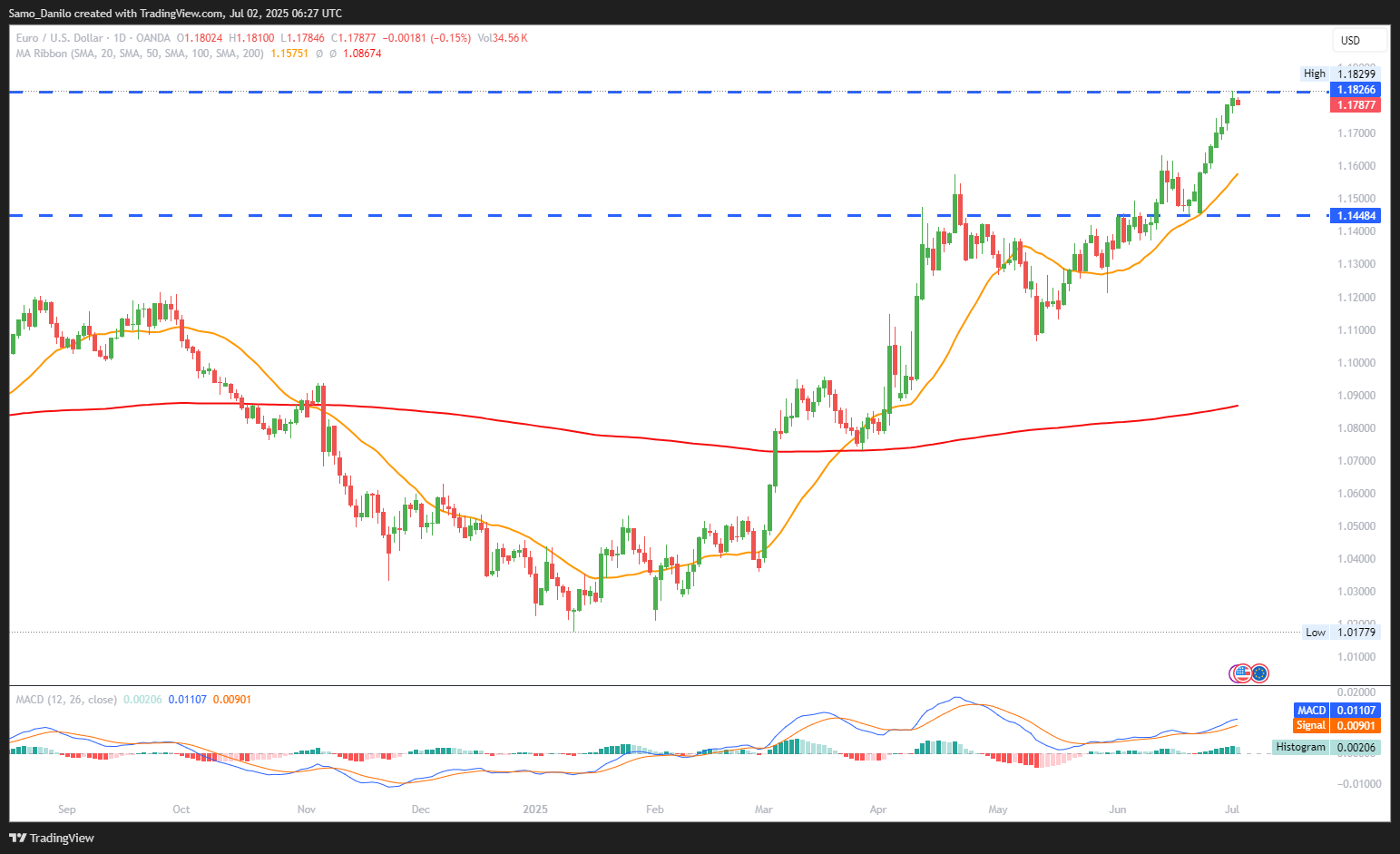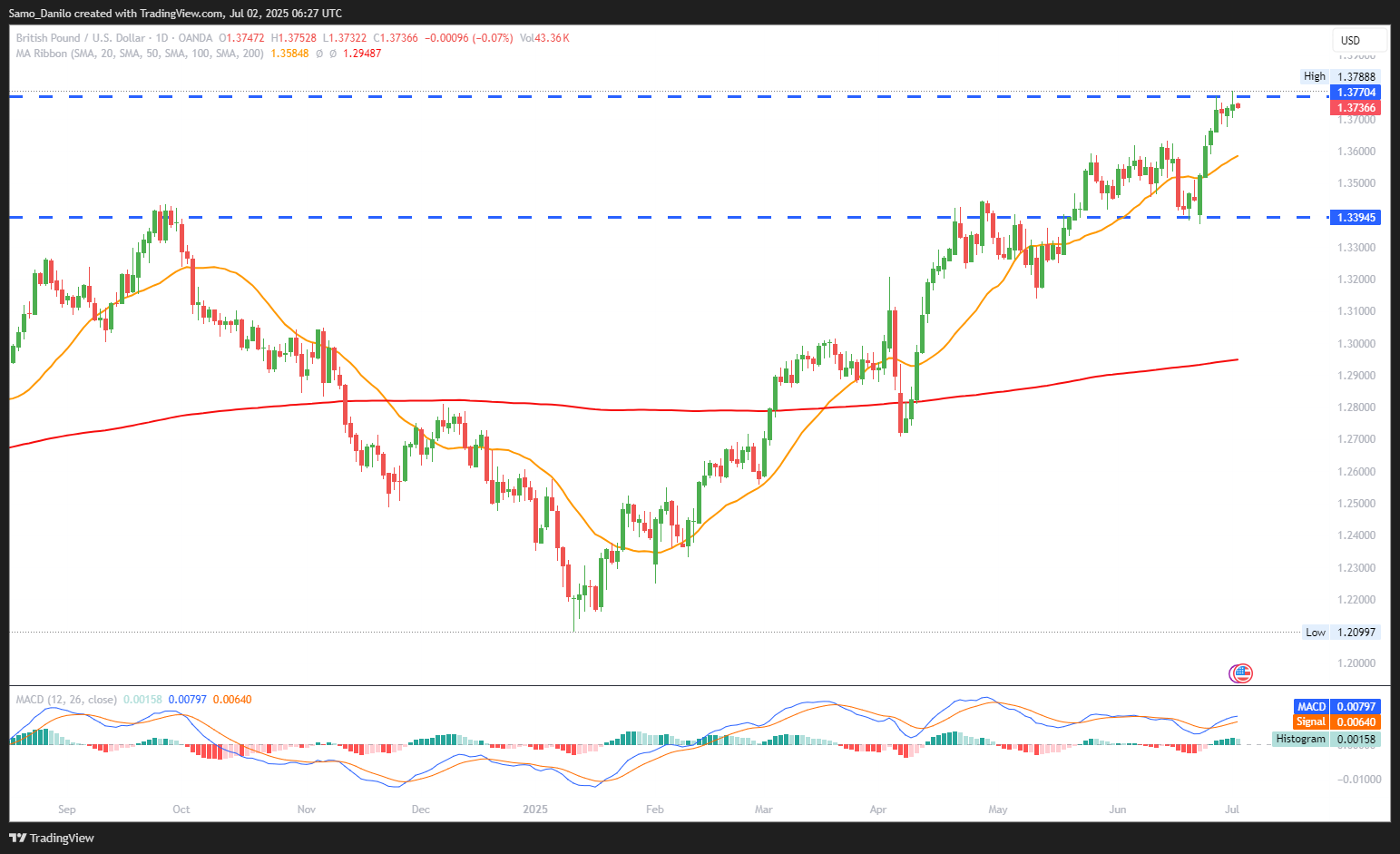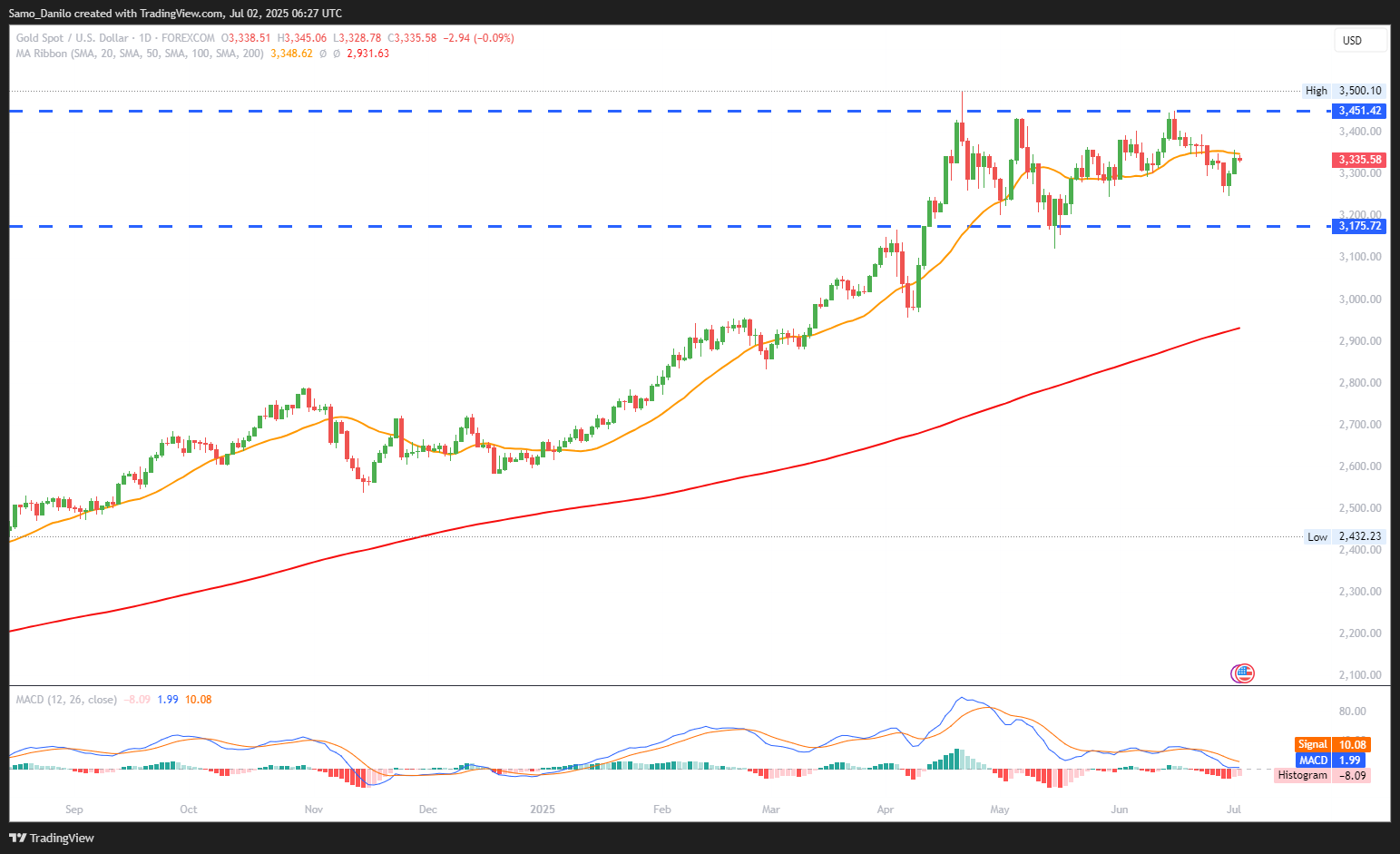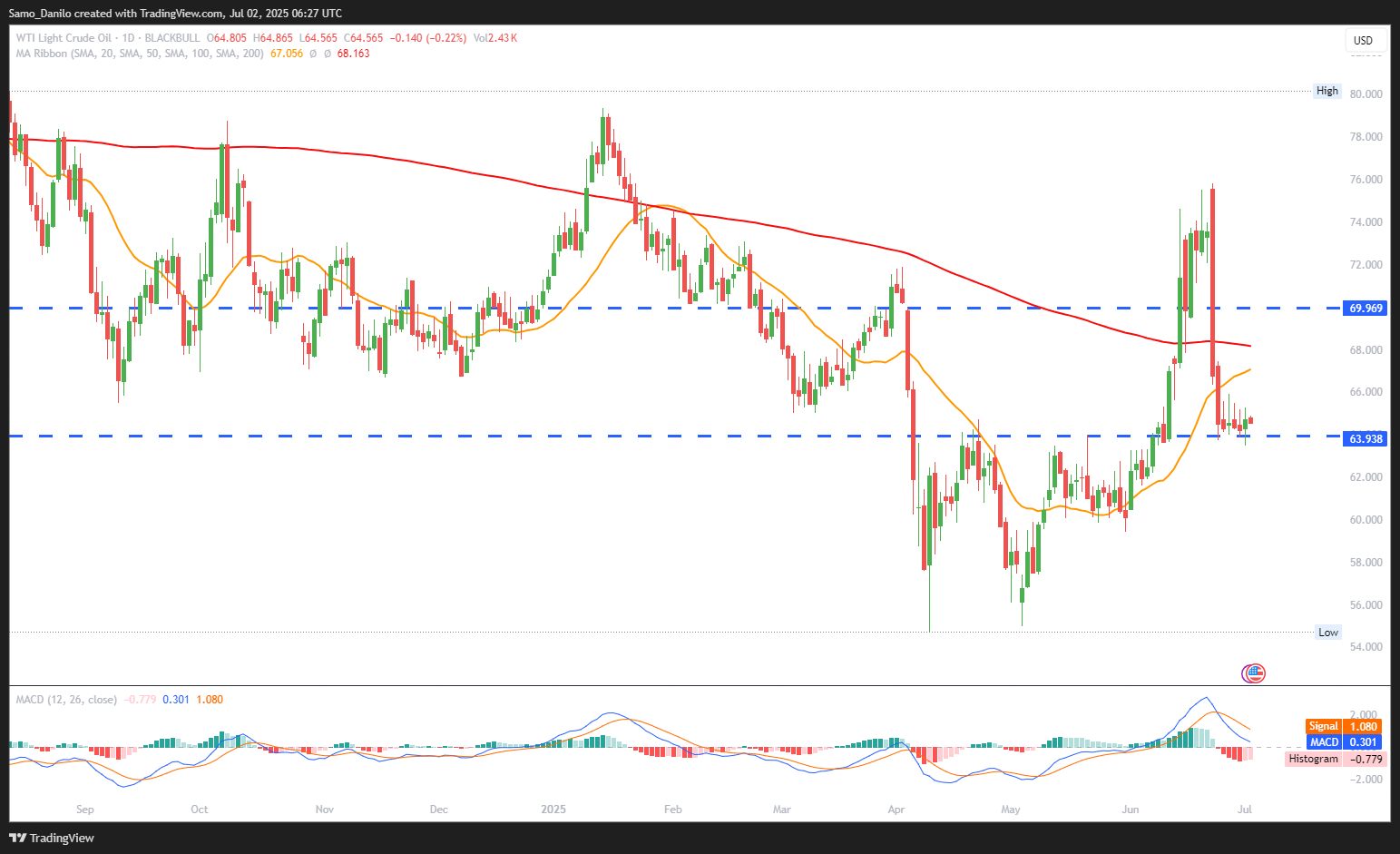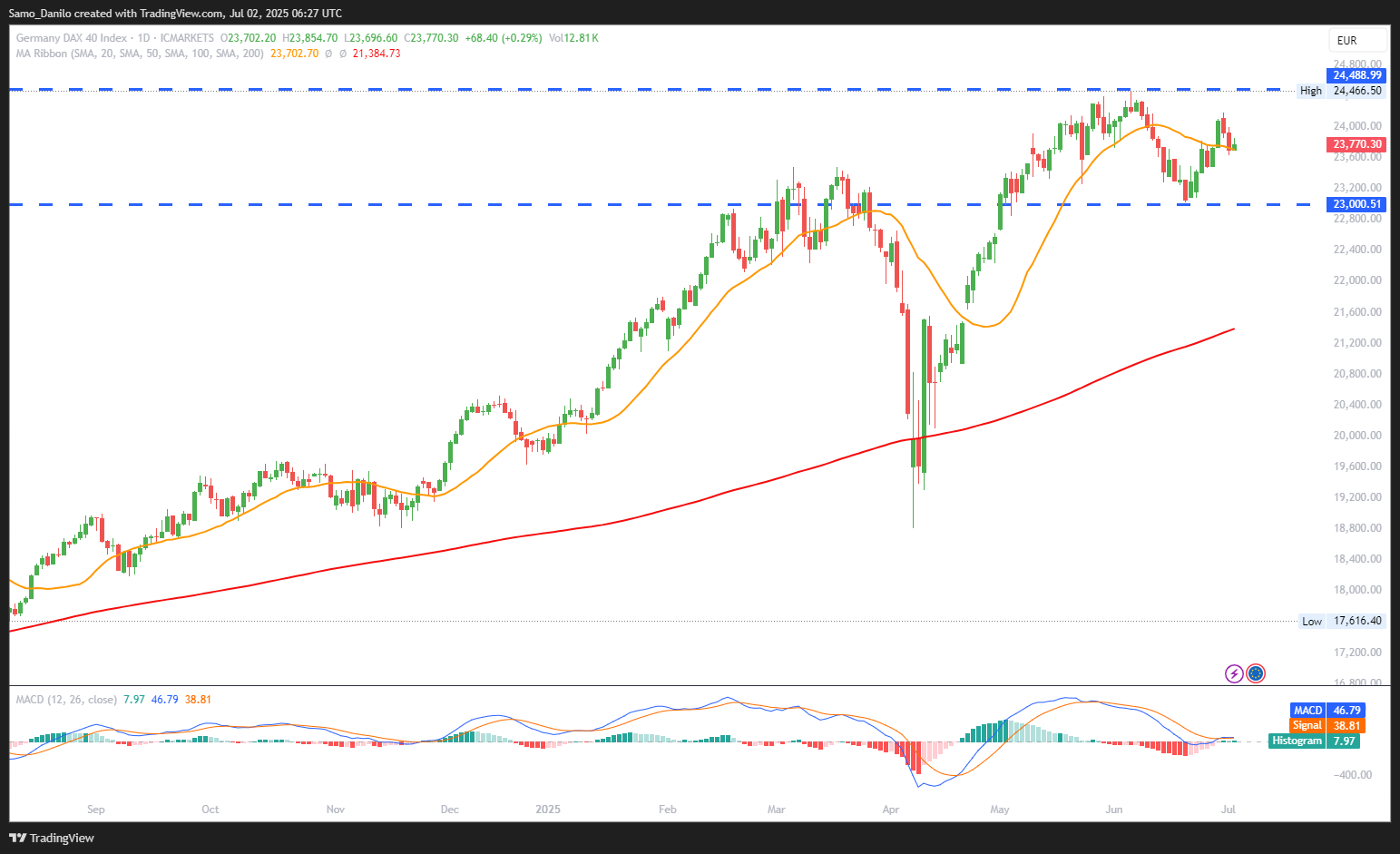EURUSD
- EUR/USD Price: The EUR/USD pair retreated on Wednesday, halting its upward trend that began on June 18. It trades around 1.1790 in European hours, reflecting a mild pullback as traders reassess macro drivers.
- Eurozone Inflation: Preliminary data showed Eurozone headline inflation at 2% in June, exactly in line with forecasts and the European Central Bank’s (ECB) target. This suggests price pressures remain steady, reducing the urgency for further policy adjustments.
- ECB’s Lane: ECB Chief Economist Philip Lane stated that the recent policy tightening cycle is now concluded, reinforcing expectations that the ECB will remain on hold and monitor incoming data rather than pursue additional hikes.
- Tariff Talks: The European Union indicated a willingness to accept a 10% universal tariff but is pressing for US concessions on sensitive sectors such as pharmaceuticals, alcohol, semiconductors, and aircraft. EU Commissioner Maros Sefcovic is set to travel to Washington to advance negotiations.
- US Manufacturing PMI: The US ISM Manufacturing PMI rose to 49.0 in June, slightly above market expectations of 48.8 and improving from May’s 48.5 reading. Though still below the 50 threshold signaling contraction, it hints at some stabilization in US manufacturing activity.
Closing statement: EUR/USD’s pullback reflects a mix of steady Eurozone inflation, shifting ECB guidance, and evolving US economic signals. Tariff negotiations and upcoming US macro data will be critical in determining whether the pair resumes its climb or consolidates further.
GBPUSD
- GBP/USD Price: The GBP/USD pair holds its winning streak for a fourth consecutive session, trading above 1.3700 during Thursday’s European session. The pair benefits from ongoing US Dollar weakness and supportive domestic signals.
- BoE Governor: Bank of England Governor Andrew Bailey reiterated that the UK labor market is showing signs of softening, reinforcing expectations for further rate cuts. This dovish tone supports the currency despite rising wage pressures.
- UK Pay: UK median pay awards increased to 3.4% in the three months to May, up from 3.2%. The higher wage growth raises questions about persistent inflationary pressures, potentially complicating the BoE’s easing path.
- JOLTS Numbers: In the US, JOLTS Job Openings climbed to 7.76 million in May, up from April’s 7.395 million and exceeding market forecasts of 7.3 million. The strong demand for labor suggests underlying economic resilience and may influence Fed policy expectations.
- ADP Employment Data: Later in the day, markets will closely watch the US ADP Employment Change report for June for further clues on US labor market strength and its implications for monetary policy and USD direction.
Closing statement: GBP/USD remains supported by a weaker US Dollar and expectations of gradual UK easing, although rising UK wage growth may complicate inflation dynamics. Near-term direction will hinge on upcoming US labor data and BoE communication clarity.
XAUUSD
- XAU/USD Price: Gold price (XAU/USD) is consolidating its two-day rally, hovering below recent highs in early European trade. A modest recovery in the US Dollar and a generally positive risk tone are acting as mild headwinds for the precious metal.
- Trade War: US President Donald Trump reignited trade tensions, warning that Japan could face new tariffs of 30–35% on all goods imported into the US. This escalation could bolster demand for gold as a geopolitical hedge, though markets have so far reacted cautiously.
- Fed Officials: Comments from Fed Governors Michelle Bowman and Christopher Waller signaled openness to a rate cut as soon as the July meeting, supporting the longer-term bullish outlook for gold amid easing prospects.
- Fed's Powell: Fed Chair Jerome Powell reaffirmed a data-dependent approach, saying more economic data would be needed before deciding on a cut, but he did not rule out a July move. This balanced message keeps traders cautious on near-term rate expectations.
- US Nonfarm Payrolls: The US June Nonfarm Payrolls (NFP) report will be released Thursday instead of Friday due to a holiday. Expectations are for a softer print at 110K vs. 139K previously. A weaker outcome could reinforce rate cut bets and support gold prices.
Closing statement: Gold remains in consolidation mode, caught between conflicting drivers: USD strength, trade tensions, and Fed rate cut prospects. The upcoming US labor data will likely be a key catalyst for the next major move.
CRUDE OIL
- Crude Oil Price: West Texas Intermediate (WTI) crude falls modestly to $64.75 per barrel in early European trading on Wednesday, down slightly from Tuesday’s close. The price action reflects continued caution among traders.
- OPEC+ Decision: Goldman Sachs analysts noted that markets are unlikely to react sharply if OPEC+ confirms a production increase on Sunday, as expectations have already shifted toward such an outcome. This limits potential upside in oil prices.
- Tariff Risks: US President Donald Trump reaffirmed his plan to reinstate reciprocal tariffs from July 9, after their temporary suspension. Renewed trade tensions could dampen global growth prospects, adding downside risk for oil demand.
- US Policy Makers: US Treasury Secretary Bessent suggested the Fed could cut rates sooner than fall, possibly by September, which could support commodity prices longer-term but failed to provide immediate relief to oil markets.
- Middle East: President Trump announced that Israel agreed to a 60-day Gaza ceasefire proposal, urging Hamas to accept the terms. Reduced geopolitical tensions in the Middle East lessen fears of immediate supply disruptions.
Closing statement: WTI prices remain under pressure, weighed by demand concerns from trade tensions and priced-in supply decisions from OPEC+, while easing geopolitical risks reduce the safe-haven bid. Traders will focus on the upcoming OPEC+ meeting and US macro data for further direction.
DAX
- DAX Price: On Tuesday, July 1, the DAX dropped 0.99% to close at 23,910, adding to Monday’s losses. Ongoing US-EU trade negotiations pressured sentiment, with worries over a potential sweeping 10% US tariff on EU exports weighing on risk appetite.
- Index Stocks: On Tuesday, July 1, the DAX dropped 0.99% to close at 23,910, adding to Monday’s losses. Ongoing US-EU trade negotiations pressured sentiment, with worries over a potential sweeping 10% US tariff on EU exports weighing on risk appetite.
- Adidas ER: In contrast to the broader market weakness, Adidas rose 4.17%, supported by upbeat earnings expectations. This divergence highlights selective optimism within the index despite broader negative sentiment.
- Eurozone Data: Attention now shifts to Eurozone unemployment figures due Wednesday, with economists forecasting the jobless rate to remain steady at 6.2% in May. A surprise in these numbers could influence ECB policy expectations and market direction.
- Lagarde’s Speech: European Central Bank President Christine Lagarde will deliver closing remarks at the ECB Sintra forum on Wednesday, which investors will watch for guidance on future monetary policy moves, especially after recent hints at a cautious rate path.
Closing statement: The DAX faces continued pressure amid trade uncertainty and sector-specific headwinds, with defensive caution prevailing. Near-term focus will center on Eurozone employment data and Lagarde’s comments for clues on economic resilience and policy direction.
